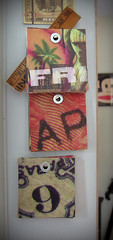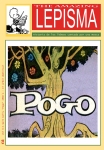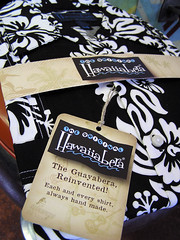"Sony Walkman's keep us walkin'
De la Soul can help you breathe"
-De la Soul from the song Tread Water from their 1989 classic debut lp "3 Feet High and Rising"
This a cool little article by Greg Quill
"It is virtually an extension of the skin. It is fitted, moulded, like so much else in modern consumer culture, to the body itself ... It is designed for movement — for mobility, for people who are always out and about, for travelling light. It is part of the required equipment of the modern `nomad.'"
It was such a small and seemingly innocuous thing, a little silver box with a headphone jack that allowed you to listen to music pre-recorded on audio cassettes as you moved from one place to another, walking the dog, commuting in buses and trains, sitting in a café reading, jogging in the park ...
It was at first an offence to no one. Unlike its predecessor, the cumbersome, megawatt ghetto blaster — a rampaging bully that imposed its loud presence on whole neighbourhoods — the Sony Walkman, introduced in North America 25 years ago this month, was a private thing, an individual indulgence, a secret door through which you could enter your own personal soundscape at will.
You could inhabit that insulated place oblivious of the distractions of the world around you, while the world around you was oblivious of your unobserved departure.
It can't have been the intention of its maker to change the world, to bring civilization to the brink of a techno-driven catastrophe, as some observers think. Its origins are certainly benign.
Though the giant electronics company recently settled a multi-million-dollar lawsuit with a 59-year-old German inventor named Andreas Pavel — his "Stereobelt" personal listening unit was patented in Italy in 1977 — Sony chairman Akio Morita is credited with championing research on the device initiated by company co-founder Masaru Ibuka and engineer Kozo Ohsone, after taking note of how willing young people were to lug around heavy boom boxes in the cause of music portability.
Morita even insisted that the Walkman — first marketed in Japan, where personal space is cherished — be fitted with no speakers and two headphone output jacks. The idea was to encourage the close sharing of music without inconveniencing the community at large.
Curiously, the legions of users — 200 million of the $200 (U.S.) units were sold within two years, and almost as many, CD and digital players included, since then — preferred to be isolated, and the two-jack model lasted just over a year. And there's the rub.
In many ways, the Walkman and its spawn — portable CD players, Apple iPods and other digital music players, even the multi-use cellphone — really have changed the world, and not necessarily for the better.
"Personalized consumption and the relentless individualization of technology over the past 25 years can easily be traced back to the Walkman," says Dr. Graeme Turner, a professor of cultural studies at the University of Queensland in Australia.
"The Walkman significantly provided a separate cultural space for its users, no matter where they went. And they could decorate that personal space the way young people decorate their bedrooms ... It was not like the TV, stereo sound system, or radio. It was personal and mobile."
The Walkman, says Turner, was deliberately marketed to youngsters, perfect targets.
"It allowed them to escape from the world, but in a really obvious way. For the first time they could listen to their personalized music selections on homemade tapes wherever they went. They could reinforce their self-image by focusing only on the music that contained the codes and messages they needed or wanted. They could move conspicuously to rhythms no once else could hear ... and if they really wanted to be noticed, they could turn up the volume so that others could hear ...
"It was a tiny noise compared to ghetto blasters, but it was still considered anti-social behaviour in its time," Turner continues. "I remember reading signs on the London Underground in the 1980s that threatened fines for sound leakage from personal listening devices."
The technology-driven personalization of taste — manifested in these post-Walkman days in portable CD players, digital music downloading and playback devices, mobile wireless Internet communicators, the ubiquitous PDA (personal digital assistant), mobile telephones and text messaging — represents both a repudiation of former modes of social transaction that were necessarily communal, such as music shared in live performance settings, and a fragmentation of social activity.
As well as the privatization of identity, Turner adds, who says the Walkman has had "enormous cultural, sociological and psychological consequences.
"We may think we're connected to the universe, we may well be in control of our personal space as a result of these technologies, we may think we're networking, but it's in a one-on-one system. It's a fetishization of connectedness, an illusion."
Now comes news of Sony's launch of a smaller, lighter and less expensive competitor to Apple's revolutionary iPod digital music file player.
This new personal listening device, with the not-so-imaginative moniker NW-HD1, is about the size of a credit card, 1.3 cm thick, weighs 4 oz. and can apparently store a lot more music than the current market favourite — 13,000 songs on a 20-gigabyte hard drive with a 30-hour rechargeable battery capacity compared to the 20G iPod model's 5,000 songs and 10-hour battery life.
The new machine, released 25 years to the day after the arrival of the Walkman, uses software unique to Sony. Songs in other formats such as the popular MP3 cannot be played on it. As with other digital music players, users must transfer music from their own CD collections or downloaded from Sony over the Internet through a home computer, making it even easier for music fans to bypass conventional retail procedures and to create personalized collections of music that bear no resemblance to record industry product.
The Walkman is the watermelon seed on which the music empire slipped and fell, according to Jennifer Brayton, assistant professor of sociology at Ryerson, a specialist in technology and media studies, and a DJ for 20 years.
"If you didn't want to listen to pre-made tapes manufactured by record companies, you could suddenly make your own and take them wherever you travelled, and put the music to all kinds of uses, as an accompaniment to walking, exercising, commuting, sailing a boat.
"It gave young urban people a new kind of geographical freedom, a world without parental supervision, an environment they could make to their own liking."
But the self-creation of personal musical landscapes is anathema to the recording industry, a threat to its revenue, and the industry fought back by lobbying successfully for levies on blank tape and blank CDs, Brayton says, but ultimately to no avail.
"The Walkman and its digital offspring have changed the way music is made and marketed now by millions of individual artists working as independent businesspeople. They brought an end to music as a monolithic industry."
Brayton also points to the status value of Walkmans — models by Sony and rivals are now collectibles — and subsequent music playback technology.
"These machines aren't inexpensive, and they divide the haves from the have-nots. Having the very latest model — the smallest model, now that miniaturization is a social fetish — is a status symbol."
And the machines invite an odd sort of social overture, she adds. "You see kids asking each other what they're listening to on their headphones, implying a sense of sharing but without the actual experience. Music used to be a communal experience. The technology initiated by the Walkman hasn't increased social connections. Quite the opposite."
Marshall McLuhan observed 50 years ago that the more technology humans use, the more isolated they become, notes Bhesham Sharma, a musicologist at University of Western Ontario and author of Music And Culture In The Age Of Mechanical Reproduction.
"And the Walkman embodies that notion: It is a remarkably alienating device whose key effect was to change music from a communal event to a personal experience. Because music resides in the cognitive faculties of the individual, it provides the means to construct a customized soundscape that can inspire the listener, trigger all kinds of sensations at will in an environment that shuts out the world. In fact, the world is at odds with the user."
Because the Walkman — the name is now a generic term for all personal listening devices — facilitates the enhancement of the user's emotional life, it acts, Sharma says, as a kind of "musical perfume that keeps out the noises of the real world.
"With the aid of a Walkman, laborious exercise such as jogging or gym work becomes something else, a different kind of experience."
The Walkman may also have changed popular music itself over the years, Sharma believes. All music has a shelf life, and its appeal, though profound at first, dissipates with the intense scrutiny and overexposure that personal listening devices allow.
"Overexposure contributes to a dissociation between music and emotional responses to the music. As a consequence, clichés of style start to be eliminated in the production of music, but what disappears first are the emotional and aesthetic elements, not the rhythmic and atonal qualities. In the production of certain types of music, rhythm takes precedence over aesthetic considerations."
And because music is ultimately designed for mass consumption, record companies produce more and more of what they perceive the market wants, regardless of quality.
"The associations music carries make it virtually communal, even in an in insular world," Sharma adds. "And the music (hip hop and rap) that has been dominating popular culture in the last decade has taken on the image and connotations of a subculture, music that appears connected to a larger whole, but is nonetheless isolated."
Additional articles by Greg Quill can be found at www.thestar.com
Subscribe to:
Post Comments (Atom)





























































No comments:
Post a Comment